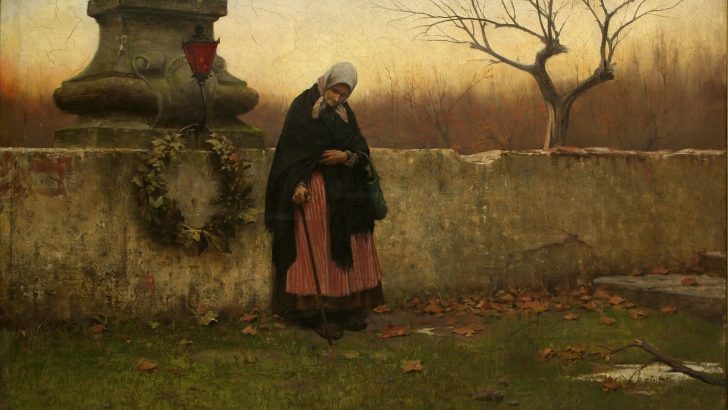Mors Britannica: Lifestyle & Death-Style in Britain Today
by Douglas J. Davies (Oxford University Press, £30.00)
Death: The Graveside Companion
edited by Joanna Ebenstein (Thames & Hudson, £29.95)
Halloween, or rather the Eve of All Saints, has passed once again, and again with perhaps less religious observance than in past centuries. Halloween seems to date only from 1745 according to the internet, though the OED says it goes back to at least 1556. In point of fact, when one considers that the Feast of All Saints, was celebrated as an early Christian holy day, the idea that Halloween is “new” makes no sense.
Today is the feast of All Souls, a day on which it has long been traditional to visit family graves and to recall the faithful departed. This and All Saints day commemorate in reality the communion of saints in the widest sense, melding familial love with religious devotion.
Expression
The Eve of All Saints came to be seen as a day when the graves might open, and “the dead awake and speak to many,” as the Irish expression has it. But the feasts are only in the Latin and Protestant traditions. They are not universal. Among the Orthodox and Oriental Christian different days were selected. Other traditions are also involved, as in Mexico, where Día de Muertos has elements of Aztec culture mixed into it.
Halloween as we now have it is a purely commercial phenomenon. The ghosts and pumpkins imported from New England have almost smothered the simpler fun, such as bob apple, that were once the norm in Ireland. New notions are being imposed over the earliest traditions of our cultures.
These two books explore in their different ways aspects of death, burial, morning and communication with the dead.
Dr Davies explores attitudes to death, to the belief in the afterlife, and the burial customs, which in some ways are becoming more elaborate as religion declines. Oddly though surveys suggest that the belief in an afterlife as declined for British men since the 1950s, among women it has improved from 56% to 57%.
Joanna Ebenstein’s book is an extraordinary visual feast of images of the dead, of ghosts and the afterlife generally. Here truly is what the Middle Ages called “the dance of death”.
It features materials from the Richard Harris art collection, and presents a vast array of attitudes to the horrors and glories of life and death, the too often inhuman side of the human imagination.
The feasts of All Hallows, All Saints, and All Souls, are a time for all to reflect on the reality of the cycle of life. It may all seem fun. But our ancestors did not always think so, as these books, in their different and starkly revealing ways, allow us to explore. The real message of these darkening days as winter approaches is an ancient one: Memento mori.


 Peter Costello
Peter Costello Jakub Schikaneder's All Souls' Day
Jakub Schikaneder's All Souls' Day 